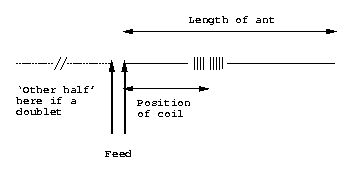Quarter Wave Box Calculator 21
Set the options in the New Document dialog box. Insert div tag containers and then drag the right side to resize the width to dreamweaevr within the column. Hover over each element to access the overhead menu to hide, duplicate, delete, and swap elements within the layout. Before I started to design the speaker box, I needed to know some of the following parameters. Use diyaudioandvideo.com calculator for speaker box volume. This was done at a 1/4' depth with dog bones. Step 21: Acoustic Sheeting. It prevents bad interactions between the wave the driver is currently radiating,.
Photo 1: The TABAQ speaker A transmission line designed and optimized for the Tang Band 3” full- range drivers. Inspired by debates on the Internet about quarter wave designs with Tang Band 3˝ full-range drivers, I decided to design my own quarter wave loudspeakers. They sure deserve a better construction than those found on the Internet. In the last couple of years, I have worked with the useful simulation models from Martin J. King and designed and built a successful TL sub (“The HideAway TL Sub,” 7/06 aX). Working with Martin’s models is quite educational, and I feel confident about quarter wave (transmission line) design.
Please refer to my article “Martin J. King for Dummies” on.
The TABAQ Sound Pressure Level (SPL) is impressive for such a small driver, with a very smooth and broad frequency response. The dashed line in Fig. 1 is the Infinite Baffle (IB) response, and the solid line is the summed output from the driver and the opening.
The sound is open with no unwanted resonances, and the bass is relatively deep and clean. The first time you listen to this speaker, you will be impressed by the quality of the sound and performance of the bass, bearing in mind the size of the driver and the lack of financial problems building it. The problems with baffle step are corrected with a simple filter, which balances the SPL in the listening room. Figure 1: TABAQ sound pressure level. Tang Band Drivers You can use all the 3˝ drivers in this construction. My first test was with W3-926S, which I replaced with W3-315SC.

The Tang Band drivers have a relatively high Fs and very high Qts, which means the rolloff is more gentle than a low Qts driver, and it is therefore possible to design a quarter wave with useful output well below Fs. However, high Qts drivers can be difficult to control. The whole idea with a quarter wave — or transmission line — is to extend the bass by the contribution from the opening. At the cabinet resonance, the output adds to the driver output. However, there are some unwanted higher harmonics, which are out of phase with the driver, causing uneven frequency response.
These problems can be solved by different design parameters, which I have successfully used with the TABAQ design. Figure 2: TABAQ design. Design The tuning frequency of the cabinet alone should be set lower than the driver Fs. Because the drivers all have a very high Qts, I started to see how low I could go, getting maximum bass performance out of the drivers without losing the overall frequency balance. After hours of simulation with Martin’s MathCad models, I found the best compromise was 55Hz, which is low for drivers with an Fs of 100 or 110Hz. But it works!
The tuning frequency is set by the length of the pipe and the geometry. Age of empires 3 download full game. A tapered pipe is shorter than a straight pipe for the same tuning frequency. TABAQ uses the mass loading principle, in which the last part of the pipe has a smaller area than the rest of the pipe. Sony vegas pro 11 slideshow template. The air in this part of the pipe adds resistance to the driver (more mass-mass loading).
